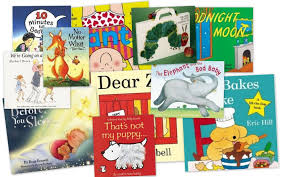
Title: What is the connection between educator background and the amount of language and literacy instruction in preschool classrooms?
Authors: Rachel E. Schachter, Assistant Professor, University of Nebraska-Lincoln, Caitlin F. Spear, Postdoctoral Researcher, Crane Center for Early Childhood Research and Policy, Shayne B. Piasta, Associate Professor and Crane Center for Early Childhood Research and Policy Faculty Associate
Original Citation: Schachter, R. E., Spear, C. F., Piasta, S. B., Justice, L. M., & Logan, J. A. R. (2016). Early childhood educators’ knowledge, beliefs, experiences, and children’s language- and literacy-learning opportunities: What is the connection?. Early Childhood Research Quarterly, 36, 281-294.
Background: Early childhood educators play a critical role in providing the language and literacy instruction that young children need in order to develop key skills for later school success (National Association for the Education of Young Children, 2009; National Early Literacy Panel, 2008). However, research indicates that, in general, the quantity and quality of language and literacy instruction in early childhood classrooms is low (Justice et al., 2008; Pelatti et al., 2014). In this study, we sought to understand how educators’ backgrounds may be linked to the amount of language and literacy instruction they provide. These background factors included educators’ 1) knowledge about the structure of language and how to teach language and literacy to children, 2) beliefs about language and literacy instruction, 3) educational attainment, and 4) years of prior teaching experience.
Data: Two hundred twenty-two mostly female, White/Non-Hispanic (80%) preschool educators working in the state of Ohio participated in the study. Participants responded to surveys to determine their knowledge, beliefs, backgrounds and experiences to capture background information. In addition, classroom observations were used to determine the amount of time that they provided language and literacy instruction.
Results: Results of this study highlight several important findings about educator backgrounds and their language and literacy instruction in preschool settings.
- First, educators in general provided very low amounts of language and literacy instruction.
- Second, amounts were highest for reading instruction (average 8.34 minutes) and lowest for writing instruction (average 1.29 minutes).
- Third, educators who had higher knowledge about the structure of language provided more language instruction.
- Fourth, educators with beliefs that were more aligned with research-based practices provided lower amounts of instruction.
- Fifth, educators with early childhood-related degrees spent more time on code instruction (e.g., alphabet knowledge, phonics) than those without early childhood-related degrees.
- Finally, the more experienced the educator, the less language and literacy instruction they provided.
Conclusion: Connections between educator background and the quantity of language and literacy instruction are complicated. Overall, the amount of time educators spent on language and literacy instruction was low, reinforcing the need to continue to ensure that children have sufficient time to develop important language and literacy skills. Our finding that educator characteristics contribute to the amount of instruction in different ways indicates the need for more nuanced research about educator characteristics to better understand how to improve language and literacy instruction.
References: Justice, L.M., Mashburn, A.J., Hamre, B.K., & Pianta, R.C. (2008). Quality of language and literacy instruction in preschool classrooms serving as-risk pupils. Early Childhood Research Quarterly, 23, 51-68. http://dx.doi.org/10.1016/j.ecresq.2007.09.00
National Association for Education of Young Children (2009). Developmentally appropriate practice in early childhood programs serving children from birth through age 8: A position statement of National Association for the Education of Young Children. Downloaded from https://www.naeyc.org/files/naeyc/file/positions/PSDAP.pdf
National Early Literacy Panel. (2008). Developing early literacy: Report of the National Early Literacy Panel. Washington, DC: National Institute for Literacy.
Pelatti, C.Y., Piasta, S.B., Justice, L.M., & O’Connell, A. (2014). Language- and literacy-learning opportunities in early childhood classrooms: Children’s typical experiences and within-classroom variability. Early Childhood Research Quarterly, 29, 144-154. http://dx.doi.org/10.1016/j.ecresq.2014.05.004
Snow, C.E., Burns, M.S., & Griffin, P. (1998). Preventing reading difficulties in young children. Washington, DC: National Academy Press.

